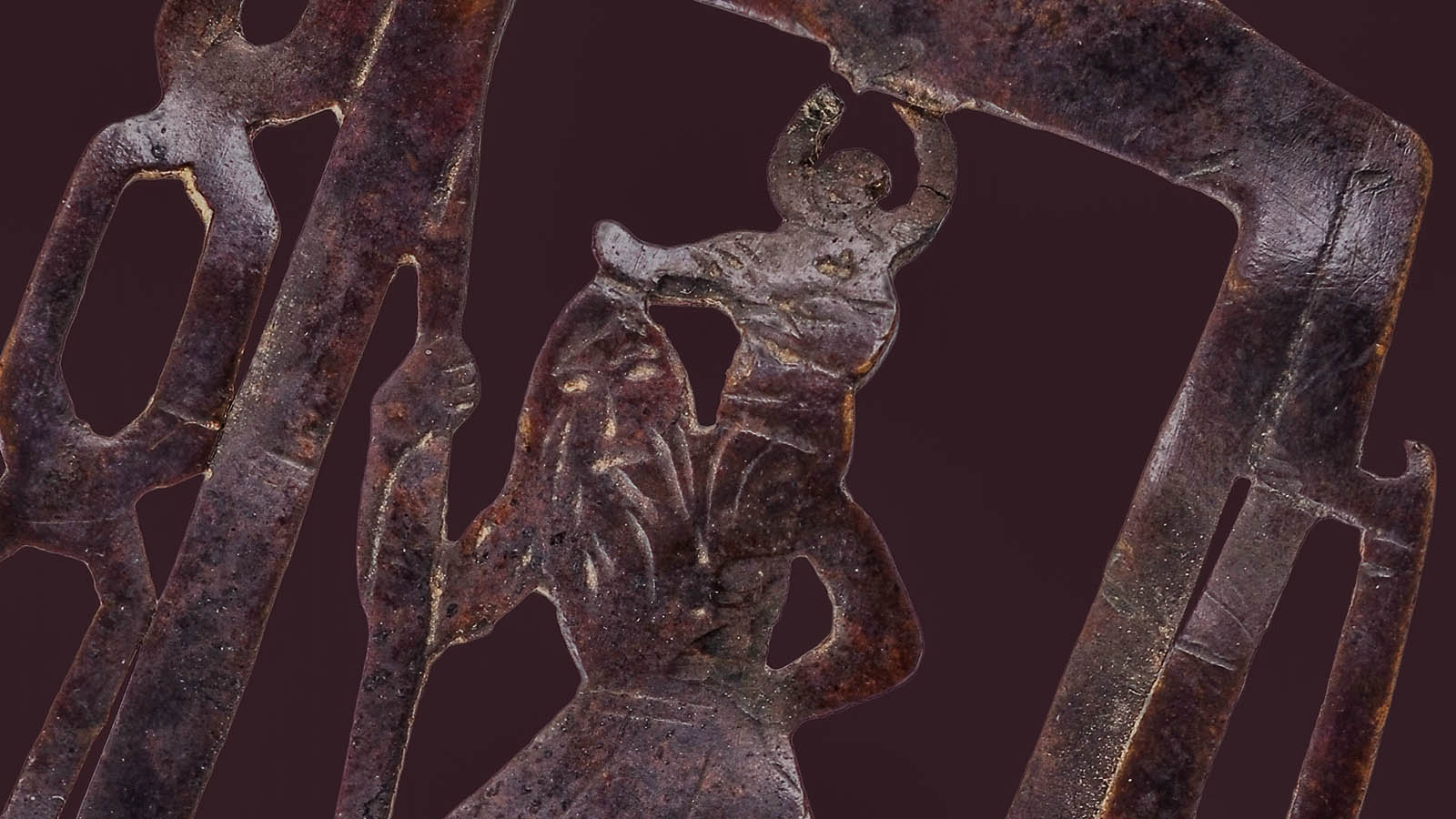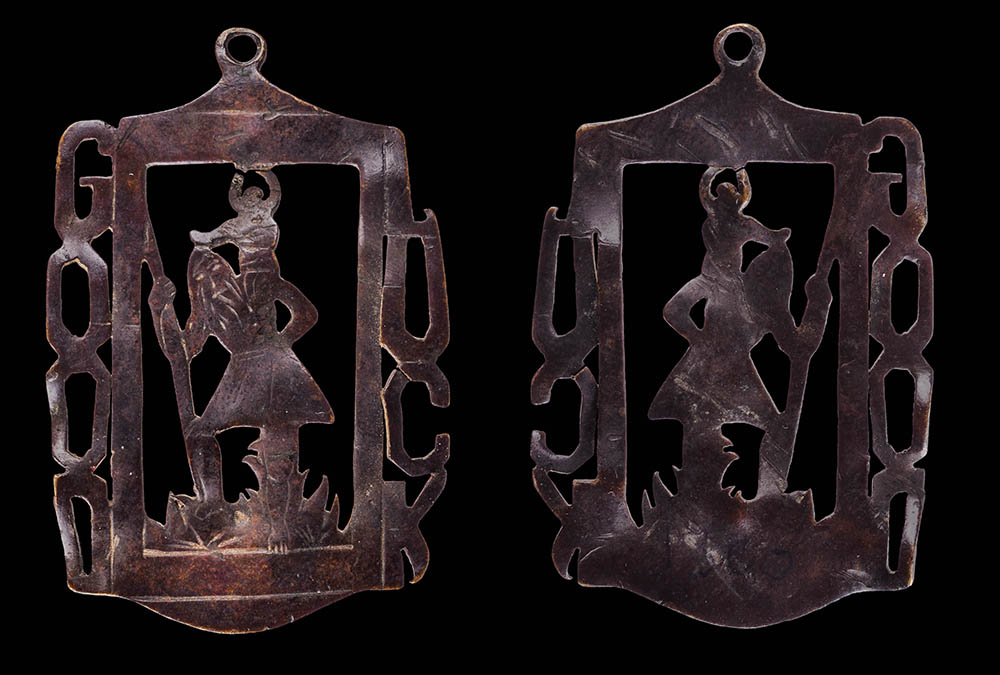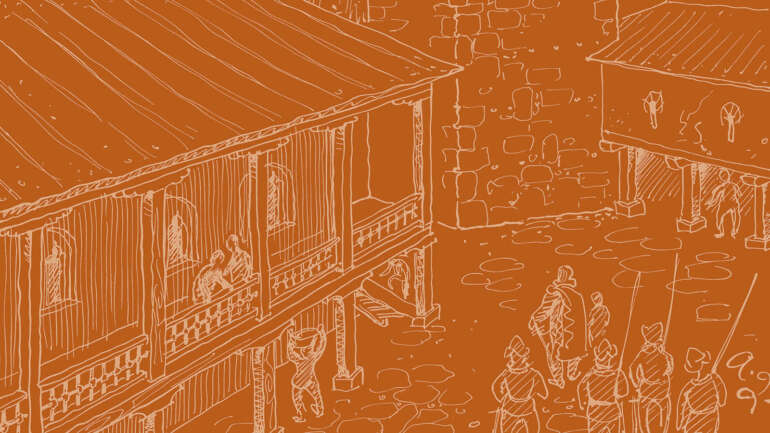By: Branislav Cvetković, museum advisor
The rich Collection of Cult and Liturgical Objects of our Museum also comprise pendants, a type of cult artifacts belonging to the so-called personal piety of various religious groups. These are specially decorated amulets, phylacteries and reliquaries, as well as pectoral crosses, dated to the Middle Ages and modern times. One of the most interesting items originally worn around the neck is at the same time one with the smallest format in the museum fund (4 x 2.5 x 0.5 cm). It is a thin metal pendant – made by casting and perforation – it has a vertical rectangular shape and a small loop on top for a chain or ribbon.
The pendant has a figural depiction without an inscription, but according to iconographic pattern it represents Saint Christopher with his long staff, standing on the grassy river bank and with Christ child on his shoulder. This early Christian saint was respected throughout Europe and there are several vita texts and legends about him, which is why he may be differently portrayed as a martyr, an infantry warrior, a cavalry warrior, a cynocefalus and a Christ-bearer. One of the most beloved stories tells how he, being of giant stature, carried passengers across the river. On one occasion, he took a child who was too heavy – it was Jesus himself who carried the burden of the world, hence the name of the saint, because in Greek Χριστόφορος means “Christ-bearer”.
Over time, he became protector of sailors, fishermen, boatmen, rafters and passengers in general, and especially respected as a guardian of sudden death – that is why figures of Saint Christopher are often painted near entrances to temples and on the facades of churches so they can be seen from afar. In modern times he is also respected as protector of motorists and pilots, which led to mass production of badges with the image of Christopher as decorations for truck and bus windshields. Our pendant, however, is handmade – on the obverse, thin incisions depict the facial features and long beard of the saint while the Christ child is nimbed, with his right hand gestures in blessing and in his left holds a globe with a cross. The pendent can be dated to the beginning of the 20th C., as indicated by the lateral inscription: GOOD LUCK. Damage to the letters point to possible context of the find – it was apparently carried by an Anglo-Saxon pilot shot down over the Balkans…






